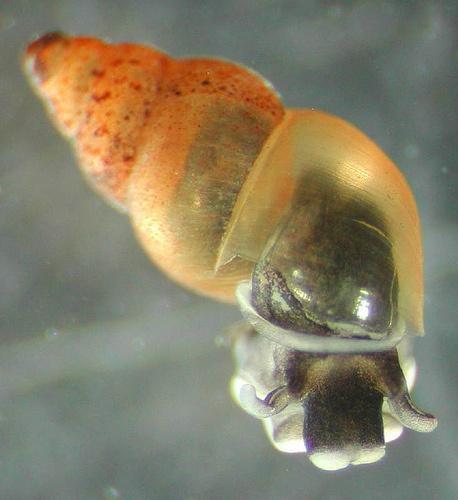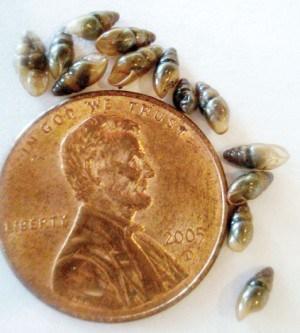How the in-debt-up-to-our-eyeballs feral [sic] government wastes taxpayers’ hard-earned dollars, Part 3.
In addition to $1.5 million to a Boston hospital to study why lesbians are fat, and $385,000 to a Yale University ornithologist to study the length of duck penises, the feral government has also awarded $880,000 to the University of Iowa to study the sex life of the New Zealand mudsnail.


Matt Cover reports for CNSNews, March 27, 2013, that the National Science Foundation (NSF) awarded a grant for $876,752 to the University of Iowa to study the New Zealand snails to see if it is better that they reproduce sexually or asexually – the snail can do both – hoping to gain insight on why so many organisms practice sexual reproduction.
From the study’s abstract:
“Sexual reproduction is more costly than asexual reproduction, yet nearly all organisms reproduce sexually at least some of the time. Why is sexual reproduction so common despite its costs? This project will use a different organism, Potamopyrgus antipodarum, a New Zealand snail, which has both sexual and independently-derived asexual lineages that make it ideally suited to address fundamental evolutionary questions of how genes and genomes evolve in the absence of sexual reproduction.”
In other words, the study seeks to see if there are genetic advantages to sexual reproduction that justify its evolutionary costs, advantages such as avoiding genetic mutations or gene loss.
In a University of Iowa press release announcing the grant, this is described as the “cost of males” – explaining that female organisms shouldn’t need to produce sons instead of daughters because producing daughters simply involves asexual duplication – which can then duplicate themselves – while male offspring cannot produce other male offspring unaided.
The release says: “[T]he commonness of sex is surprising because asexual females should be able to produce twice as many daughters as sexual females that make both male and female offspring. Despite this and other costs, nearly all organisms reproduce sexually at least some of the time. This means that sex must be associated with profound advantages, while asexual reproduction must have significant evolutionary consequences.”
The broader aim of the study is to find out why sexual reproduction and males exist, arguing that sex is biologically inefficient for females. Because an asexual organism can simply clone itself faster than it can reproduce if it finds a mate, the study seeks to see if there are other benefits to sexual reproduction that outweigh this ‘cost’ of finding a mate.
The all-important research was first funded in 2011 and will continue until 2015.
So far, the grant has paid out $502,357, according to NSF, and could pay out the full $880,000 between now and 2015. The study is funded through what NSF calls a continuing grant meaning that it agrees with the researcher to fund a certain amount, but can end up spending more on the grant if NSF agrees that more money is warranted.
H/t California Political News & Views
~Eowyn

